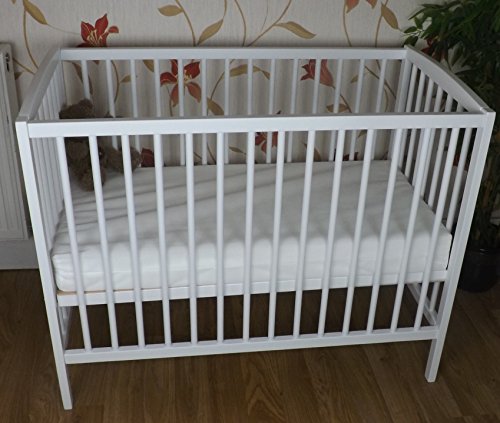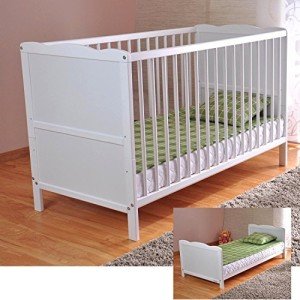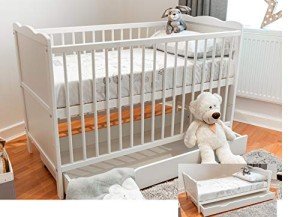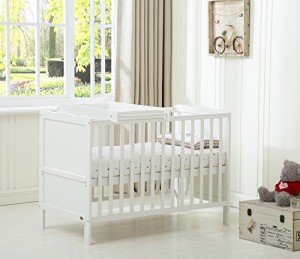When it comes to preparing for a new addition to the family, parents often find themselves navigating a world of choices that can feel overwhelming. One of the most significant decisions that new parents will face is selecting the right cot bed for their baby. Among the popular choices, the white baby dropside cot bed with a foam mattress stands out for several reasons. This guide delves into the features, benefits, and factors to consider when choosing this particular type of cot bed, helping parents make informed decisions for their little ones.
Understanding the White Baby Dropside Cot Bed
The white baby dropside cot bed is designed for infants and toddlers, typically accommodating children from birth to about three years of age. The contemporary design and classic white color make it a versatile addition to any nursery décor. The dropside feature enhances usability, making it easier for parents to place their baby in the cot or lift them out.
Key Features of a Dropside Cot Bed
-
Dropside Design: The dropside mechanism allows one side of the cot to lower, providing easier access to the child. This feature is particularly beneficial when settling the baby for sleep or accessing them during nighttime feedings.
-
Adjustable Mattress Heights: Many dropside cot beds come with adjustable mattress heights, enabling parents to raise or lower the mattress as the child grows. This feature ensures safety by making it difficult for older toddlers to climb out.
-
Sturdy Construction: A well-built dropside cot bed is constructed from durable materials that can withstand the wear and tear of daily use. Parents should look for options made from solid wood or high-quality composites.
-
Timeless Aesthetic: The white finish on these cot beds complements various nursery themes and provides a clean, fresh look that can match any bedding and accessories.
Benefits of a Foam Mattress
In addition to selecting the right cot bed, the mattress is another critical component of creating a safe and comfortable sleep space for a baby. A foam mattress has become a popular choice among parents for several reasons:
-
Lightweight and Portable: Foam mattresses are typically lighter than their inner-spring counterparts, making them easier to handle when changing bedding or cleaning the cot.
-
Comfort and Support: A good quality foam mattress often contours to the baby's body, providing comfort and support while ensuring a restful sleep.
-
Hypoallergenic Properties: Many foam mattresses are designed with hypoallergenic materials, making them ideal for babies with allergies or sensitivities.
-
Durability: Foam mattresses can offer excellent longevity, maintaining their shape and support through years of use, particularly when used in a cot bed transitioning to a toddler bed.
Safety Considerations
Safety is paramount when it comes to choosing a cot bed and mattress. The following considerations are essential for ensuring a safe sleep environment for the baby:
-
Certifications: Look for cot beds and mattresses that meet safety standards, such as compliance with the Consumer Product Safety Commission (CPSC) guidelines.
-
Non-Toxic Materials: Ensure that paints and finishes used on the cot bed are free from harmful chemicals. This is particularly important as babies often put their mouths on surfaces.
-
Implement Proper Assembly: Follow the manufacturer's assembly instructions carefully to reduce the risk of the cot bed becoming unstable.
-
Check for Gaps: Ensure that there are no gaps between the mattress and cot sides where a child could get trapped. The mattress should fit snugly without any significant spaces.
-
Regular Maintenance: Regularly check the cot bed for any signs of wear and tear or loose fittings, as these could pose safety hazards.
FAQs
1. What age is appropriate for transitioning from a cot bed to a toddler bed?
Typically, parents can transition their child from a cot bed to a toddler bed around the age of 2. However, if the child is climbing out of the cot or seems uncomfortable, it may be time to make the switch earlier.
2. How often should I replace the mattress?
It is recommended to replace the foam mattress every 3 to 5 years, or sooner if it shows signs of wear, sagging, or does not offer adequate support.
3. Can a dropside cot bed be converted into a toddler bed?
Many dropside cot beds are designed with the capability to convert into a toddler bed, often by removing the dropside panel and adjusting the height. Always check the product specifications for convertible options.
4. Is it safe to use a second-hand cot bed?
If choosing a second-hand cot bed, ensure it complies with current safety standards and hasn’t experienced any recalls. Inspect it for wear, missing parts, or damage before use.
Choosing the right baby dropside cot bed with a foam mattress can make a significant difference in fostering a comfortable and safe sleep environment for a child. With thoughtful consideration of features, benefits, and safety measures, parents can provide their little ones with a nurturing space that supports their growth and development. By adhering to safety guidelines and selecting a durable, stylish cot bed, parents can ensure the best for their child as they transition from babyhood to toddlerhood.






